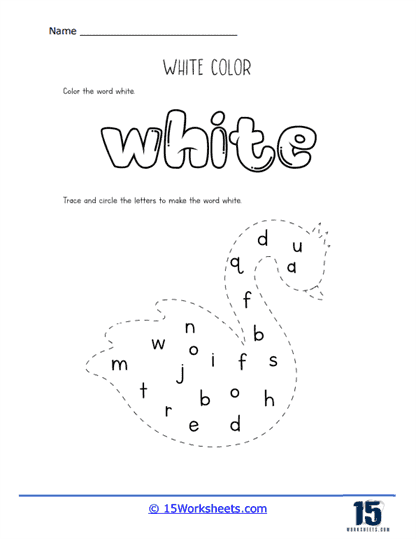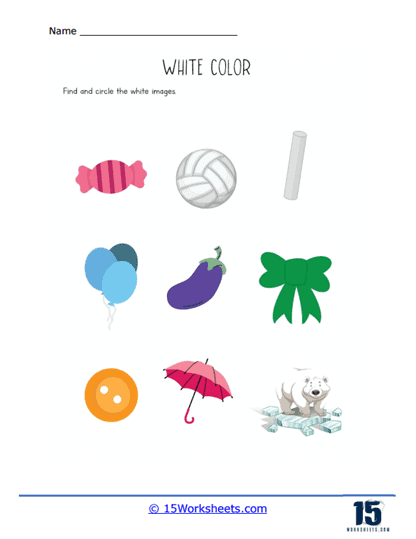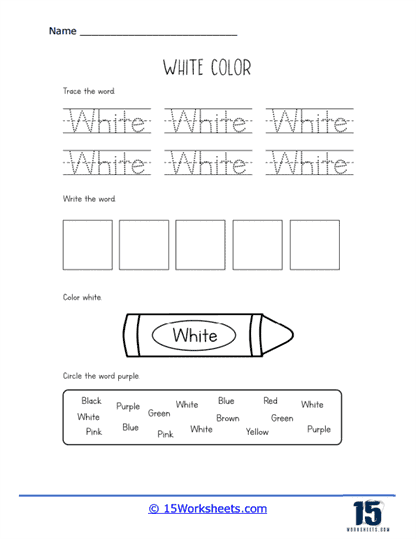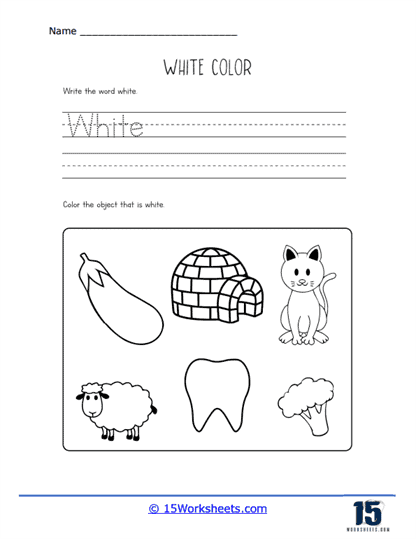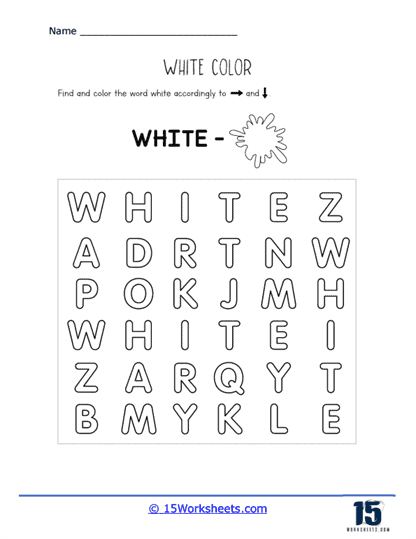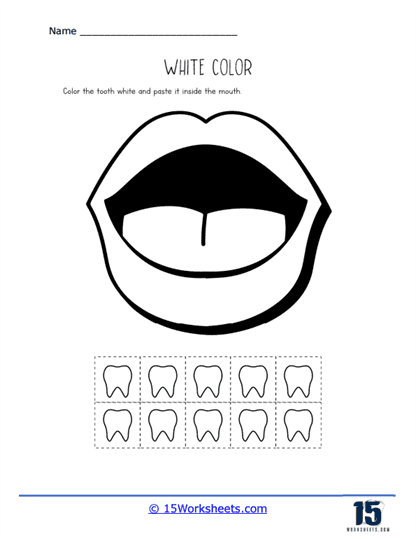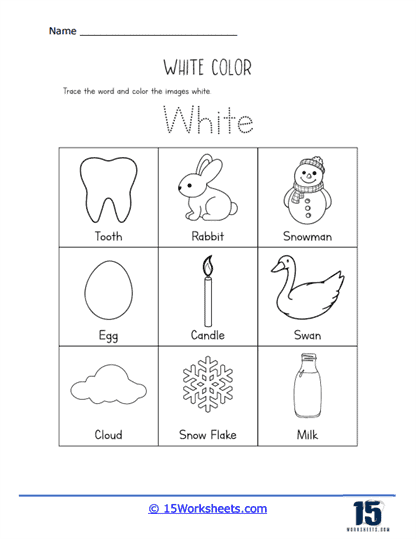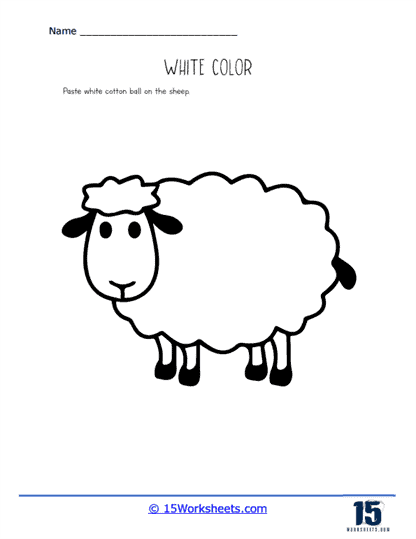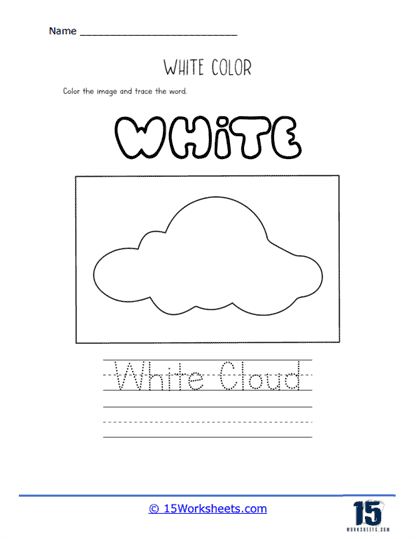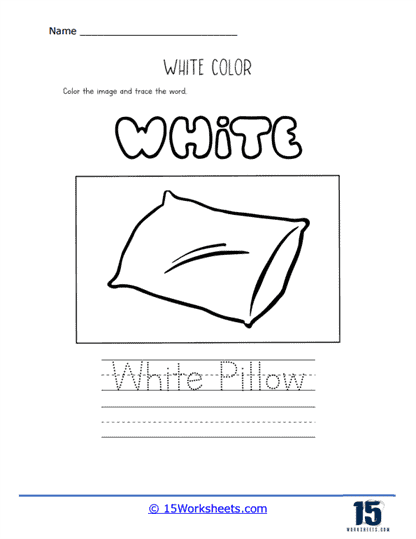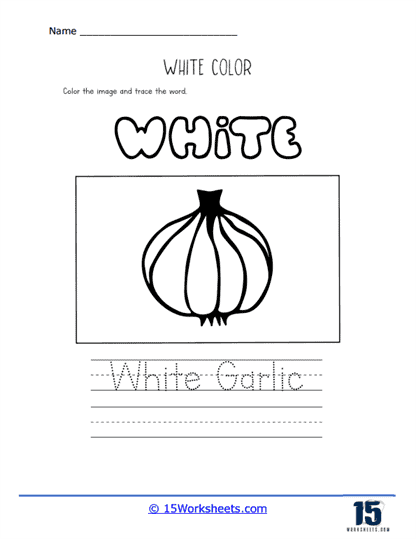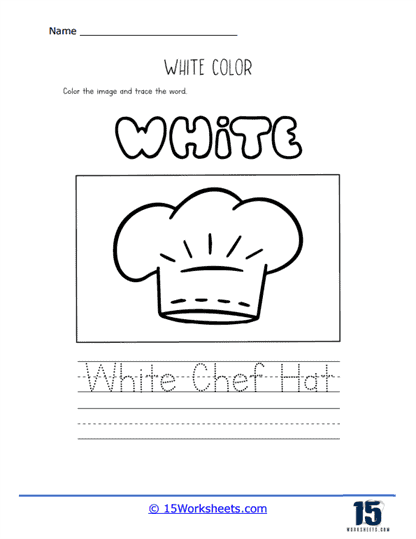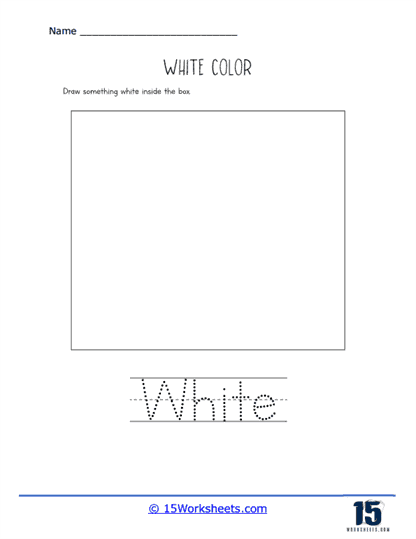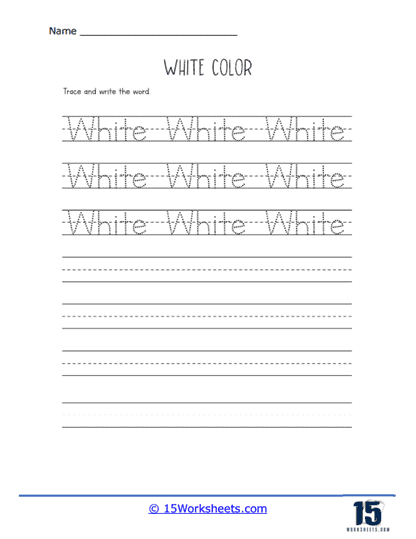White Worksheets
All About These 15 Worksheets
Dive into the radiant world of the color white with this comprehensive series of Kindergarten worksheets. This collection is designed to introduce young learners to the concept of colors, specifically on the color white. Through a variety of interactive exercises, students will develop familiarity with the color white. These worksheets also help students develop their color recognition skills, enhance their vocabulary, and engage in hands-on activities that promote creativity and critical thinking. Through these worksheets, students will:
- Practice identifying and coloring objects that are white, reinforcing their understanding of the color and developing visual discrimination skills;
- Engage in tracing exercises that focus on tracing the color word “white” and writing it independently, promoting letter formation and word recognition;
- And learn about objects and symbols commonly associated with the color white, fostering their vocabulary development.
Through this engaging series of White worksheets, young learners will deepen their understanding of colors while specifically exploring the characteristics and associations of the color white. By participating in a variety of activities that involve color recognition, tracing, writing, drawing, and coloring, students will develop their visual discrimination skills, enhance their vocabulary, and foster creativity.
These worksheets also provide opportunities for hands-on exploration, problem-solving, and cognitive development. By engaging with these exercises, students will develop a love for colors, strengthen their fine motor skills, and cultivate an appreciation for the unique qualities of the color white. Ultimately, this collection serves as a stepping stone for future color exploration and lays the foundation for a lifelong appreciation of art, creativity, and self-expression.
What Does the Color White Symbolize?
White is a color often associated with purity, simplicity, and neutrality. It represents the reflection of all colors in the visible light spectrum, making it unique in various ways. Here’s an overview of the color white:
- Light and color – White light contains all the wavelengths of the visible light spectrum, making it a combination of all colors. When an object appears white, it means that it is reflecting all the colors of light and absorbing none.
- Symbolism and cultural significance – White is often associated with purity, innocence, cleanliness, and simplicity across different cultures. In Western cultures, white is commonly worn by brides during weddings, symbolizing purity and new beginnings. In many Eastern cultures, white is associated with mourning and is worn during funerals. White is also linked to peace, as exemplified by the white dove and the white flag as a symbol of truce or surrender.
- Art and design – White has been used by artists throughout history as both a color and a tool to create highlights, contrast, and negative space. In design, white is often used to create a sense of cleanliness, minimalism, and spaciousness. It is a versatile color that pairs well with almost any other color, creating visually appealing and harmonious compositions.
- Pigments and materials – Various pigments have been used to create white throughout history, including lead white, zinc white, titanium white, and chalk. Today, titanium white is the most common pigment used in art, due to its opacity, brightness, and relative safety compared to other white pigments.
- Fashion – White is a popular color in fashion, often associated with elegance, simplicity, and sophistication. It is commonly used for clothing items such as shirts, dresses, and shoes, and can be worn year-round or during specific seasons, like summer, for its light, airy quality.
- Architecture and interior design – White is widely used in architecture and interior design to create a sense of space, cleanliness, and minimalism. It is often used for walls, ceilings, and furniture to make spaces appear larger and brighter.
- Science and technology – White plays a significant role in various scientific and technological applications. In optics, white light is an essential component of understanding color and vision. In technology, white materials and coatings are often used for their reflective properties or as a base color for other applications, such as paints and coatings.
- Idioms and expressions – Several idioms and expressions in the English language feature the color white, such as “white as a sheet” (to describe someone who appears pale or frightened), “white lie” (a small, harmless lie), and “white elephant” (an expensive and burdensome possession).
In summary, white is a unique color with a wide range of symbolic meanings, cultural associations, and uses in art, design, fashion, architecture, and technology. Its ability to reflect all colors of light and its associations with purity, innocence, and simplicity make it a powerful and influential color in many aspects of human life.

